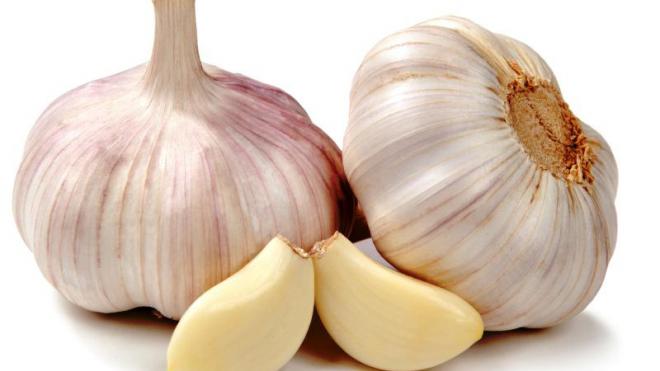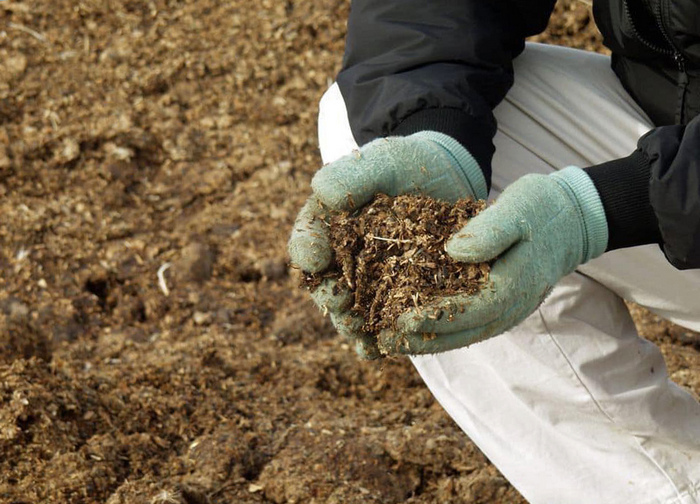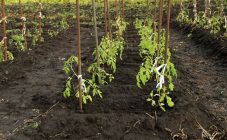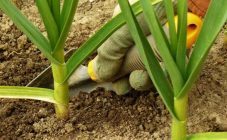Content:
Garlic doesn't grow everywhere. For him, you need to prepare a special place or choose the right site in the garden. The land and its characteristics will become important conditions for a good and rich harvest. Compliance with the planting technique, the timing of its implementation will help to avoid plant diseases. For these reasons, amateur gardeners and professionals alike find out in advance what soil garlic loves. Based on this information, they are seeking to improve the yield of the crop.
Planting garlic: Terms and Conditions
Planting crops can be carried out both before winter (winter) and in spring (spring). For plants obtained after spring sowing, a longer shelf life before a new harvest is characteristic, and there are no arrows. For winter varieties of culture, distinctive features are the presence of a large head, a fast ripening period. In Russia, the culture is grown in the open field.
Spring sowing is carried out after complete snow melting, preferably in the second half of April, depending on the growing area. Soil temperature will be an important condition. You should wait until it warms up to 5 degrees.
For proper lighting, garlic beds are positioned from north to south. For convenient loosening, the development of the root system, the distance between plants is 8 cm, and the row spacing is at least 20 cm.
Winter garlic is planted from mid September to mid October. The formation of the root system must be completed before the onset of the first frost in order for the plant to withstand winter frosts well.
An important point will be knowing what kind of land garlic loves. The site is selected on a hill where the garlic will be well lit and warmed up in the sun. The landing site should be changed annually. The plant should be returned to its former place of growth no earlier than after 4 years. This will help avoid plant disease, parasite infestation.
The soil for garlic should be rested, for some time before planting nothing should grow on it. The culture requires a lot of space, but in small areas it can be added to strawberries, cucumbers, planted next to bushes of currants, gooseberries, raspberries.
Soil characteristics
The soil for garlic is selected light, loose. Heavy, loamy soil is diluted with sand, expanded clay is used. It is useful in areas with excessive moisture.
The acidity of the soil for onions and garlic is the same. Preference is given to neutral or slightly acidic soil. If possible, soil analysis should be done with a pH value greater than 6.5 (neutral). The acidity level is judged by the weeds growing on the site. Plantain, horsetail, mint, woodlice, or buttercup indicate acidity. Nettle, chamomile, cornflower and clover grow on neutral and slightly acidic soil.
Increased acidity will lead to the fact that the plant will not absorb nitrogen, potassium, phosphorus, magnesium and other elements, in high doses will absorb toxic substances. Plants develop poorly with it, especially their root system. If high acidity is found just before planting, wood ash can be added to the soil.The use of mineral and organic fertilizers can be carried out no later than two weeks before planting.
Since autumn, deoxidation is carried out using chalk, dolomite flour or calcium nitrate. They neutralize the acidic soil for garlic. Lime can be used very carefully. Its excess leads to burning of plant roots. Having decided to deacidify the soil with limestone, it should be remembered that fertilizers cannot be used at the same time.
In addition, the introduction of fresh manure immediately before planting will lead to the spread of pests or diseases in the ground that could have been contained in the fertilizer of this type.
Alkaline soils need to be acidified on the contrary. It is possible to acidify the soil by applying mineral fertilizers, so their use should be carefully calibrated and strictly dosed.
Soil for a good harvest of garlic
What kind of soil is needed for onions and garlic is medium loamy, black earth, light loamy. High acidity of the soil will lead to the spread of plant diseases. The culture grows well where it was previously grown:
- zucchini;
- currant;
- legumes;
- cereals;
- cabbage;
- raspberries.
Poor precursors for the plant will be tomatoes, onions, potatoes, carrots.
Planting in a prepared area of green manure would be ideal. So, for winter crops, green manures are planted in July, mowing before flowering. If you use mustard or flacelia, the oils secreted by their root system will help rid the soil of parasites. The green mass of crops, dug up with the ground, and then moistened, saturates the soil with microelements, enriches it with oxygen, makes it loose.
You can get a good harvest only on properly prepared land, warmed up, and moderately moist. Given that the culture has an underdeveloped root system, the choice of soil plays an important role. The yield depends on its looseness and moisture, the level of acidity and compliance with the planting scheme.
Tips & Tricks
The land on which the plant is planned for planting must be prepared in advance. You should not choose a dry place, excessive humidity is also contraindicated.
What kind of soil is needed for garlic? The choice of soil is carried out, focusing on the indicators:
- The evenness of the site. The lowland will become a place of accumulation of melt and atmospheric water, leading to rotting of the bulbs. On an elevated site, the wind will blow off the snow in winter, which will lead to freezing of winter plantings;
- Illumination. Garden beds shaded by trees or houses are not suitable for growing crops;
- Moisture capacity of the earth;
- Lack of weeds or their timely removal;
- Precursor plants.
For spring crops, the soil is prepared in the fall. You need to dig deep into the ground, adding fertilizers, for example, potassium salt and humus. You can fertilize the land with the help of manure, adding it before planting the predecessor crop.
3-4 weeks before planting or from autumn (for spring crops), the soil for garlic is dug deeply (by 20 cm), and mineral fertilizers are applied at the same time. The soil, which is prone to leaching of trace elements, is regularly watered with an ash solution after planting.
Let's summarize:
- Garlic is planted in prepared soil in advance (no earlier than 2 weeks before planting);
- You can get a high yield on neutral or slightly acidic soils;
- A sunny, flat piece of land warms up perfectly and will allow you to get a good harvest;
- The choice of predecessor crops will ease the issue of site preparation.













